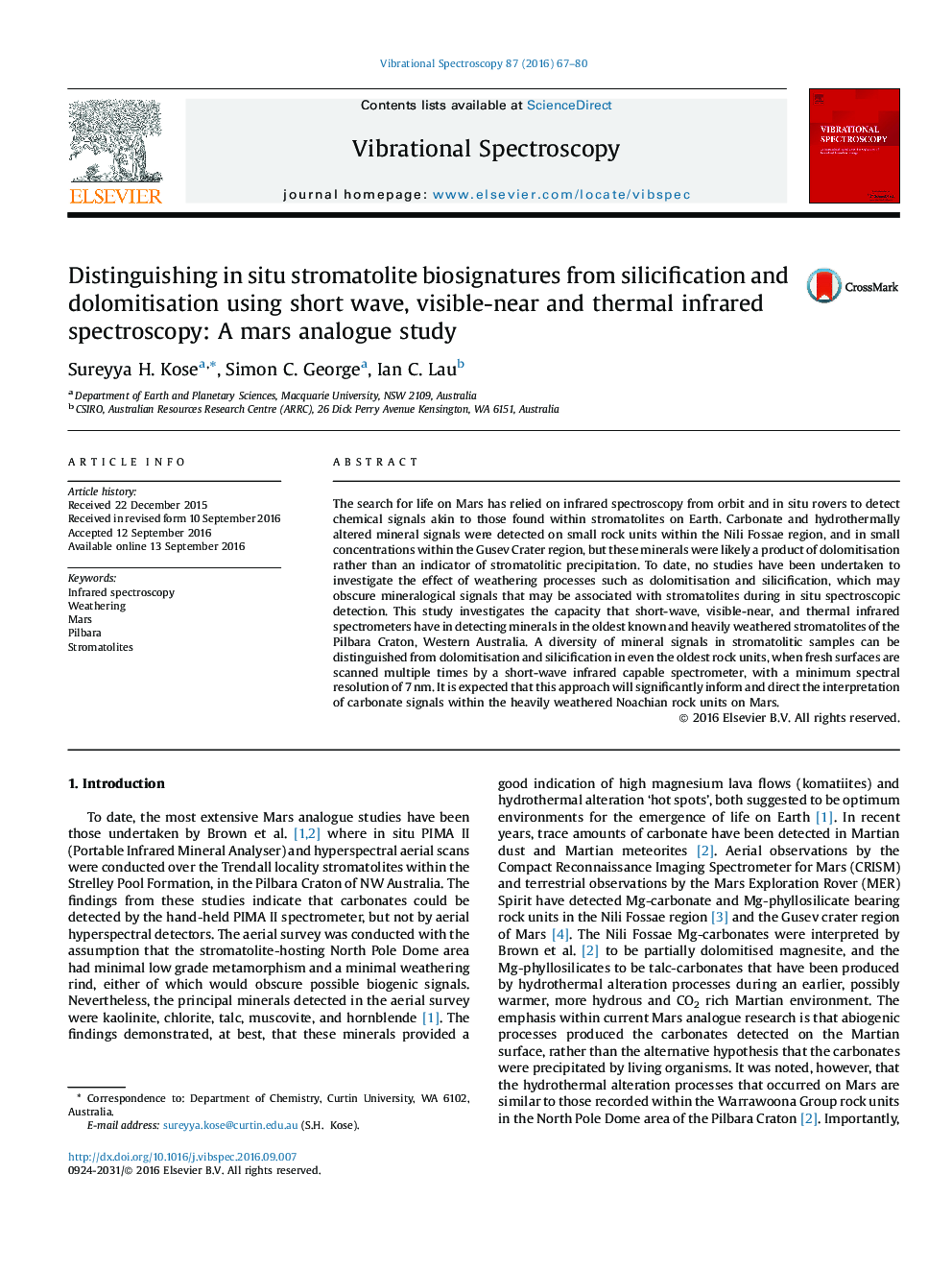| Article ID | Journal | Published Year | Pages | File Type |
|---|---|---|---|---|
| 7691006 | Vibrational Spectroscopy | 2016 | 14 Pages |
Abstract
The search for life on Mars has relied on infrared spectroscopy from orbit and in situ rovers to detect chemical signals akin to those found within stromatolites on Earth. Carbonate and hydrothermally altered mineral signals were detected on small rock units within the Nili Fossae region, and in small concentrations within the Gusev Crater region, but these minerals were likely a product of dolomitisation rather than an indicator of stromatolitic precipitation. To date, no studies have been undertaken to investigate the effect of weathering processes such as dolomitisation and silicification, which may obscure mineralogical signals that may be associated with stromatolites during in situ spectroscopic detection. This study investigates the capacity that short-wave, visible-near, and thermal infrared spectrometers have in detecting minerals in the oldest known and heavily weathered stromatolites of the Pilbara Craton, Western Australia. A diversity of mineral signals in stromatolitic samples can be distinguished from dolomitisation and silicification in even the oldest rock units, when fresh surfaces are scanned multiple times by a short-wave infrared capable spectrometer, with a minimum spectral resolution of 7Â nm. It is expected that this approach will significantly inform and direct the interpretation of carbonate signals within the heavily weathered Noachian rock units on Mars.
Related Topics
Physical Sciences and Engineering
Chemistry
Analytical Chemistry
Authors
Sureyya H. Kose, Simon C. George, Ian C. Lau,
